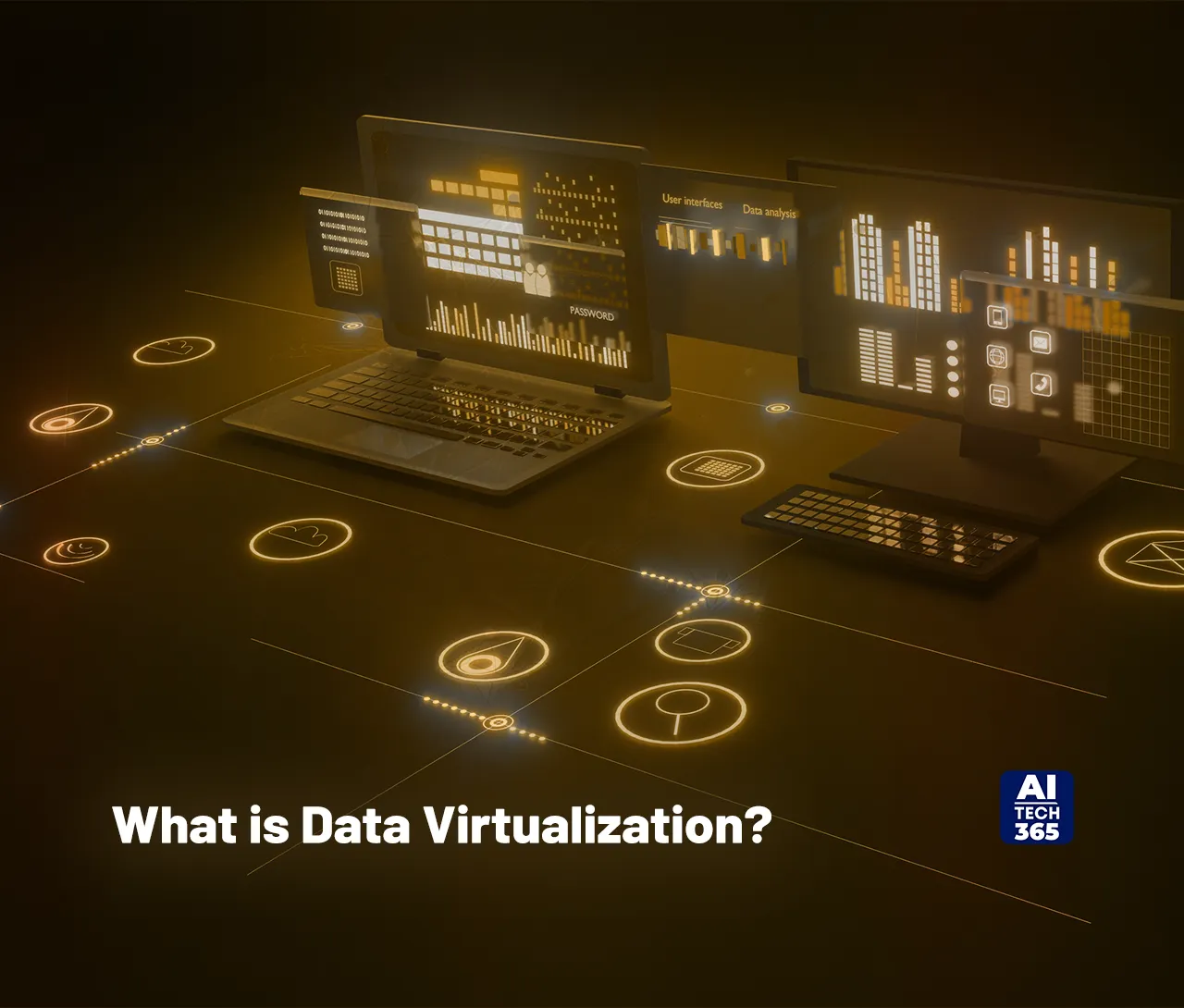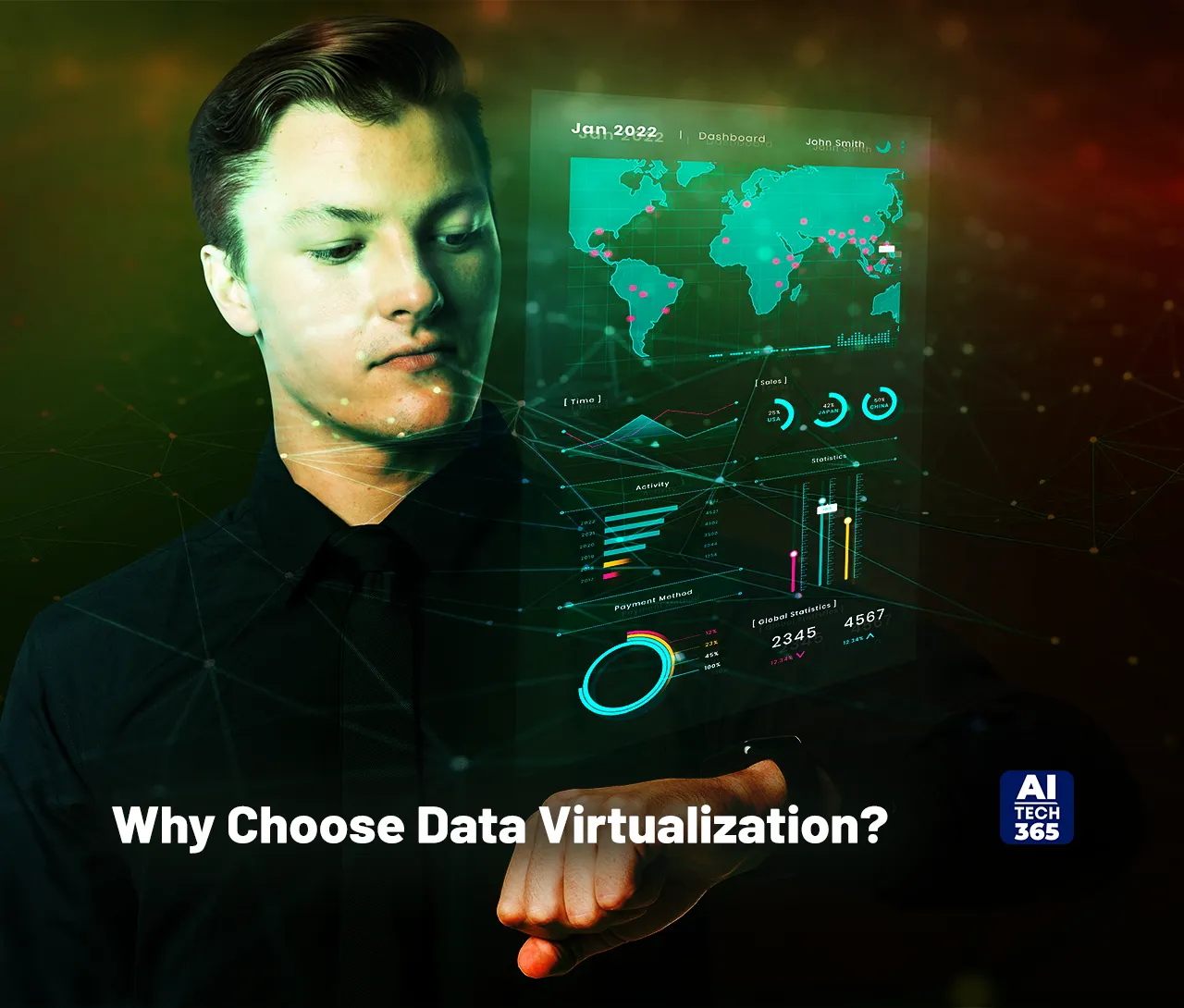All firms now need real-time data in order to make business choices instantly and provide value to customers more quickly. However, this heterogeneous data is everywhere: it may be found on websites, social media platforms, operational systems, and the cloud, just to name a few of them. Not to mention that new projects like cloud-first, big data analytics, and legacy app modernization are continuously adding new sources. Organizations can use data virtualization, a sophisticated data integration technology, to break down data silos and expedite real-time access to all company information.
This blog explores the importance of adopting this technology among businesses of all sizes. Let’s dive in!
What is Data Virtualization?

A broad approach to data management known as “data virtualization” enables an application to access and modify data without needing technical knowledge of the data. This may involve the physical location of the data or its format. It combines data from different sources into a single view. It does this without copying or moving the data.
Data virtualization software compiles both structured and unstructured data for virtual viewing via a dashboard or visualization tool. The software makes it easy to access various data formats from multiple sources. It also enables metadata to be discoverable. It only keeps metadata and logic for viewing. It does not reproduce data from source systems. IBM, SAP, Denodo, Oracle, Tibco, and Microsoft are some popular vendors of this software.
Why Choose Data Virtualization?
Data virtualization eliminates the need to duplicate or migrate data. This simplifies merging data from several sources. This minimizes the possibility of errors or data loss while also drastically cutting down on the time and cost of data integration.
No matter where the data is stored, organizations can have a consolidated view of it. For analytics and reporting, this is a single source. It improves accuracy and speeds up insights for data-driven decisions. It handles large volumes of data from multiple sources. These include cloud sources, data lakes, traditional and new databases, and other enterprise repositories.
Businesses become more agile and adaptable as a result of being able to easily scale and alter their data to meet changing business needs.
Also Read: A Holistic Guide To AI Training Data
Data Virtualization Benefits
The fact that about 30% of companies have implemented data virtualization technology suggests that its advantages for data integration and management are becoming increasingly apparent. The following are some of the reasons why businesses are choosing this technology more and more:
- Versatile access to data: It supports multi-mode, multi-source data access. This empowers users at all levels to use data tailored to their needs.
- Robust security and governance: Protects critical data from unauthorized access. It does this with enhanced security and data governance policies.
- Reusability: It lets businesses reuse integration artifacts. They can meet a wide range of needs, like master data management, virtualized data stores, and logical warehousing.
- Simplified data presentation: It hides the complexity of the data sources. It shows them as a single database for easier use.
- Improved information agility: It enables quick decisions by providing data in fast-changing businesses.
- Infrastructure independence: It is an agnostic platform. It integrates data from diverse systems and databases. This reduces operational costs and reduces data redundancy.
- Streamlined data structure: It has a simpler table structure. It eases app development and reduces maintenance.
- Seamless cloud integration: It enables easy addition of new cloud sources to existing IT systems. This provides a complete view of internal and external data.
- Optimized query performance: It has hybrid query optimization. It manages various data requests, like scheduled pushes or on-demand pulls, efficiently.
- Faster speed-to-market: It cuts time-to-data. This speeds up launching or improving products and services to better meet consumer needs.
Data virtualization software comes with additional advantages. It reduces costs by needing less hardware. It also cuts the costs of operating and maintaining ETL processes for database maintenance and loading.
Additionally, these tools can improve data quality and reduce latency. They do this by storing metadata and creating reusable virtual data layers.
How Data Virtualization Works
Data virtualization software is middleware. It enables the virtual integration of data stored in several data models. This platform lets authorized users access all the organization’s data from one place. They need not be concerned if it’s in data warehouses, cloud data lakes, or a mainframe.
Data virtualization software can do many things. It has an agnostic view of data sources. The centralized administration feature can aid data governance. It can also simplify testing and implementing data-driven analytics apps.
This software can also be used to control who has access to and doesn’t have access to particular data sources. One main reason for using this technology is to support business goals. They call for stakeholders to view a single source of truth (SSOT) in the most cost-effective way.
Common Use Cases & Systems Used With Data Virtualization Technology
- DevOps: Except for the data, teams often automate everything. They must frequently change app-driven consumer experiences. It lets teams give stakeholders production-quality data. They can do this for every stage of application development.
- ERP Upgrades: More than 50% of ERP projects go over budget and time. The root cause? It takes time and complexity to stand up and refresh project environments. It can improve upon old methods. It can provide ERP teams with virtual data copies more effectively. This can reduce complexity, lower TCO, and speed up projects.
- Cloud Migration: Before creating space-efficient test environments, use data virtualization. It can safely and effectively move TB-size datasets from on-premise to the cloud.
- Analytics and Reporting: For BI projects needing data integration (MDM, M&A, global financial closure, etc.), virtual data copies can provide a sandbox for destructive query and report creation. They also enable on-demand access to data across multiple sources.
- Backup and Production Support: Whole virtual data environments can help teams find the cause of a production issue. They can also ensure that changes don’t cause new problems.
Summing it Up
Data virtualization is a game-changer in today’s data-driven world. It offers a seamless way to access, integrate, and analyze data. It does this without costly, time-consuming data replication. It facilitates applications and users to access enterprise data. It works no matter the data’s location, format, or protocol. By simplifying data management, enhancing agility, and empowering real-time insights, it equips organizations to make smarter, faster decisions.
In an era where data complexity is ever-growing, adopting this technology can be the key to staying competitive. Whether it’s accelerating digital transformation, optimizing business processes, or enabling a more unified view of data, this technology is paving the way for a more connected and efficient future.






